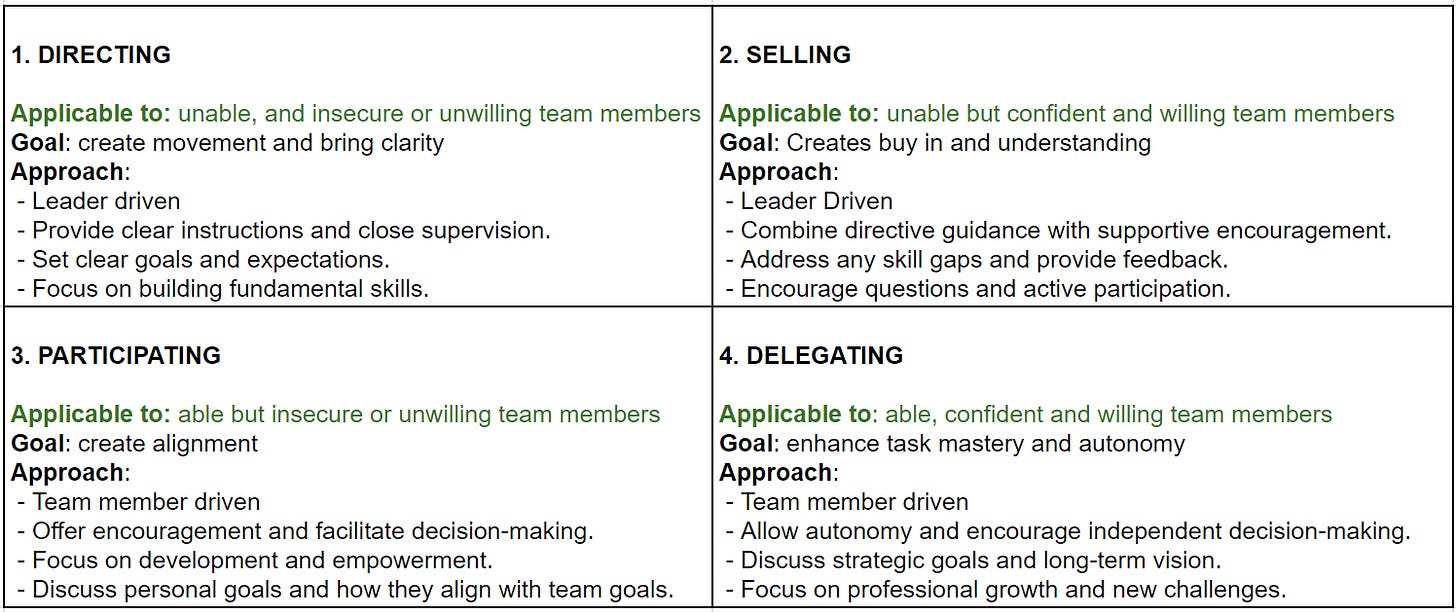Welcome to Part 2 of The craft of great one-on-ones Series. If you missed Part 1, you can find it here.
A lead’s nirvana is a priority-aligned team that trusts each other, responds to opportunities creatively and efficiently, leverages each other’s strengths, and challenges themselves to grow. In other words, a resilient, high performing team.
A team aiming to consistently sustain high performance frequently encounters obstacles and setbacks. Similar to a game of Snakes and Ladders, changes or conflicts can set the team back a few steps (Snake Bite). The role of the lead is to find the next lever that re-enables the team to focus and deliver efficiently (Ladder).

In the book "15 Commitments of Conscious Leaders", the authors quote Jack Welch: “The team that sees reality the best wins.” As people’s perception of reality is subjective, the more the team can communicate openly, the more they approach a common and realistic reality.
The lead of a team is in a unique position to be close enough to the team while maintaining some distance to also see things objectively. By actively listening in one-on-ones and asking the right questions, the lead can put together a picture of how to enable a team to work as a single unit, not simply a set of individuals.
🔍 Today we will explore 2 models that provide perspectives on the realities of the team and its members.
Tuckman’s Group Development Stages will influence the type of questions we ask in one-on-ones to enable each individual to help the team move forward.
The Situational Leadership® Model will inform how we approach and guide team members based on their ability, confidence, and willingness.
Perspective 1: Tuckman’s stages
Tuckman’s stages of group development shed light on the leadership needs during the different phases of a team. One-on-ones are a powerful vehicle for meeting each individual where they are, and showing them the opportunities for growth that being part of this team provides. With the help of George and his team, we’ll go through a practical example of the types of questions we can use in one-on-ones for each stage.
“The team that sees reality the best wins.” - Jack Welch
Forming Stage
Nick, Ashley, Roy, and Maya are the software engineering team for Project Z. George, their lead, supports them through the forming stage by focusing on building relationships and clarifying the project. Here are some questions he finds helpful:
“What are your expectations from me as your lead?”
“What are your professional aspirations, and how do you see this project helping you achieve them?”
“What is an unknown that is preventing you from getting started with this project?”
Storming Stage
George notices rising tension in the team, slowing down progress and decision-making. Different coding styles and expectations cause conflicts. He uses these questions to understand each person’s thinking:
“What parts of our tech are you curious to learn more about?”
“Are there areas where you feel stuck?”
“What are our next steps for aligning better to the code quality standards set by the company?”
Norming Stage
George and Paula share the challenges of their teams. Paula’s team interactions have improved, indicating they are in the norming phase. To encourage shared leadership, George and Paula come up with questions:
“I’m thinking of having team members be responsible for running Daily Standups. What do you think about trialing the rotation for this role?”
“I noticed you kept back during our last tech design meeting. Did you have any thoughts you wanted to share?”
“I saw you waited for X’s reply to your implementation suggestion, even though they were out sick. Here we learn by doing, so timeboxing a trial of your suggestion would have helped gain more context and reach an earlier decision.”
The Performing and Adjourning stages are omitted for brevity. The relatable scenarios above show how much thought can go into 1-on-1s to help the team work better as a unit. However, there are nuances in which type of approach works with each person. Situational Leadership® offers some insights on possible adaptations.
Perspective 2: Situational Leadership®
In a diverse team, understanding different communication styles is essential. Developed by Paul Hersey in 1969, the Situational Leadership® model provides a repeatable process for matching leadership behaviors to the performance needs of the person. From Directive to Delegating, the communication style is adaptable to the individual based on their culture, skills, accountability and autonomy.

The Participating and Delegating approaches are team member-driven and more suited for senior team members. For team members still gaining confidence or skills, the Directing and Selling styles offer clearer expectation-setting and specific support. Let’s look at how George would go about addressing the members of his team with the above leadership styles.
1. Directing (High Directive, Low Supportive)
"Nick, the proposal for the integration work needs to be ready by Friday. I've provided the necessary documentation and API details. Let's schedule a quick check-in tomorrow to address any questions you might have. Ashley has worked on a similar integration before and is also available to review your draft proposal."
2. Coaching (High Directive, High Supportive)
"Maya, your initial work on the new algorithm for data processing is a great start. Let’s set up a time to go over your ideas and discuss ways to enhance them. I’m here to offer feedback and support. Together, we can optimize the algorithm for better performance."
3. Supporting (Low Directive, High Supportive)
"Ashley, your handling of the recent code review session resulted in very good quality improvements. I think you’re ready to lead the upcoming tech sync for this part of the project. How can I assist you in preparing for this? This is a great opportunity for you to continue flexing the technical leadership muscle.”
4. Delegating (Low Directive, Low Supportive)
"Roy, I really appreciate the consistency with which you deliver excellent work. For the upcoming release, I would like to propose you take full ownership of the delivery process. Did you already have some thoughts about how to go about it?”
A leader’s skill lies in shifting between these styles as individuals grow and providing equitable support based on their ability, confidence, and willingness.
In summary, the strategic use of 1-on-1s can be a great tool for nurturing high performance teams. 1-on-1s are not merely a space for individual support. By actively listening, asking insightful questions, and providing tailored support, leaders can transform 1-on-1s into a catalyst for team maturity.
As team members grow in confidence and capability, the nature of these interactions evolves, ultimately leading to a cohesive unit that thrives on shared leadership.

